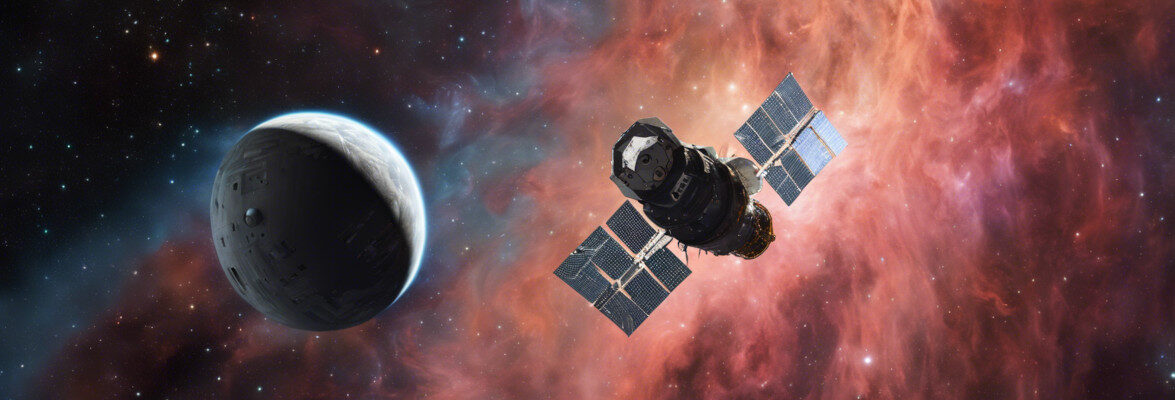
An article submitted for publication in the journal “Monthly Notices of the Royal Astronomical Society” describes a research on the supermassive black hole at the center of the galaxy NGC 5195, which is undergoing some sort of indigestion. Using data collected with various telescopes, a team of astronomers at the University of Manchester discovered that the black hole causes chaotic events in its galaxy. Among the causes there’s its interaction with a much larger galaxy called NGC 5194 or Whirlpool galaxy.
The galaxy pair formed by the dwarf galaxy NGC 5195 and the spiral galaxy NGC 5194 is interacting in an early phase of a galactic merger, although the significant difference in size between the two galaxies probably makes it more appropriate to say that the NGC 5194 will devour its smaller companion. The process is extremely slow and since who knows how long NGC 5195 periodically ends up into one of its larger companion’s spiral arms. It will take some billion years before a single galaxy is formed but there are effects of the interaction that are already visible.
When NGC 5195 ends up in its companion’s arm, a lot of gas and dust are attracted by the supermassive black hole at the center of the dwarf galaxy. Despite this galaxy’s relatively small size, the mass of this black hole has been estimated at around 19 million solar masses, really huge considering that the one at the center of the Milky Way, bigger than NGC 5195 and NGC 5194 combined, has a mass estimated at just over 4 million solar masses.
The flow of materials towards the supermassive black hole at the center of the dwarf galaxy NGC 5195 ends in the accretion disk that orbits it. This disk grows to the point where the balance inside it gets broken and the black hole can no longer swallow those materials efficiently. The consequence is that many materials get ejected at very high speed into interstellar space.
Last year, NASA’s Chandra X-ray Space Observatory detected arcs of X-ray emission that appeared to be the result of that violent event, which represented a kind of indigestion for the supermassive black hole. Now that area has been studied with the e-MERLIN radio telescope, the latest evolution of the Multi-Element Radio Linked Interferometer Network, an array of antennas scattered across England.
The e-MERLIN radio telescope is run by the University of Manchester’s Jodrell Bank Observatory whose astronomers conducted this research. Radio detections were put together with Chandra’s but also with others conducted over the years with the VLA radio telescope and the Hubble Space Telescope.
In the image, the left side (courtesy Jon Christensen) shows NGC 5194 and NGC 5195. The right side shows a false color image of NGC 5195 (courtesy NRAO / AUI / NSF / NASA / CXC / NASA / ESA / STScI / U. Manchester / Rampadarath et al.) obtained by combining observations of VLA (red), Chandra Space Observatory (green) and Hubble Space Telescope (blue). The inset shows the maps created from observations by e-MERLIN (courtesy e-MERLIN / U. Manchester / Rampadarath et al.) of the nucleus of NGC 5195.
By putting together all the observations, the researchers have reconstructed what’s happening. The ejection of materials from the supermassive black hole causes a shock wave that heats the interstellar medium causing the X-ray emission and stripping electrons from neutral hydrogen. The arcs observed by Chandra and Hubble are created by a bubble of these materials.
These arcs have an estimated age of one to two million years so we’re lucky to see them. They show the consequences of what happened around the supermassive black hole, an example of what influence it can have in a vast area. In 2013 the study of various observations of the supermassive black hole at the center of the Milky Way showed the effects of a much less exceptional meal. What happened in NGC 5195 shows what kind of consequences the activity of a supermassive black hole can have in extraordinary cases.


Permalink
Permalink